Eel was stated to be one of the significant four meals of the Edo period of time (1603–1868), when the custom of eating it in summertime began. A seem at the culinary customs of the time through Kitagawa Morisada’s modern writings.
A Hearty Meal of Eel
The large 4 food items of the Edo time period (1603–1868) are mentioned to be soba, sushi, tempura, and unagi (freshwater eel). The previous of these was served in a quite different type in comparison with now, and different in the east and west of Japan.
In Morisada mankō (Morisada’s Sketches) by the author Kitagawa Morisada, he features a picture—see the best of the article—showing eel on rice, as was usually served in Edo from the 1830s to the 1860s. It sells for 200 mon—taking 1 mon as about the identical as ¥12, this would be ¥2,400, or extremely very similar to current costs.
As Morisada describes it, on best of the rice there are 5 or 6 pieces of eel all-around 9 centimeters long every single, and then a even more layer of rice with a topping of 6 or 7 little eels. A dozen or so morsels of unagi built for a hearty food.
Road vendors called botefuri offered only kabayaki eel, which experienced been grilled and dipped in sauce. They carried them applying a yoke on their shoulders, with the fish and other ingredients in containers attached to cords on both equally sides. When stopped by a client, the botefuri would consider out an eel from the box and skewer and grill it on the location.
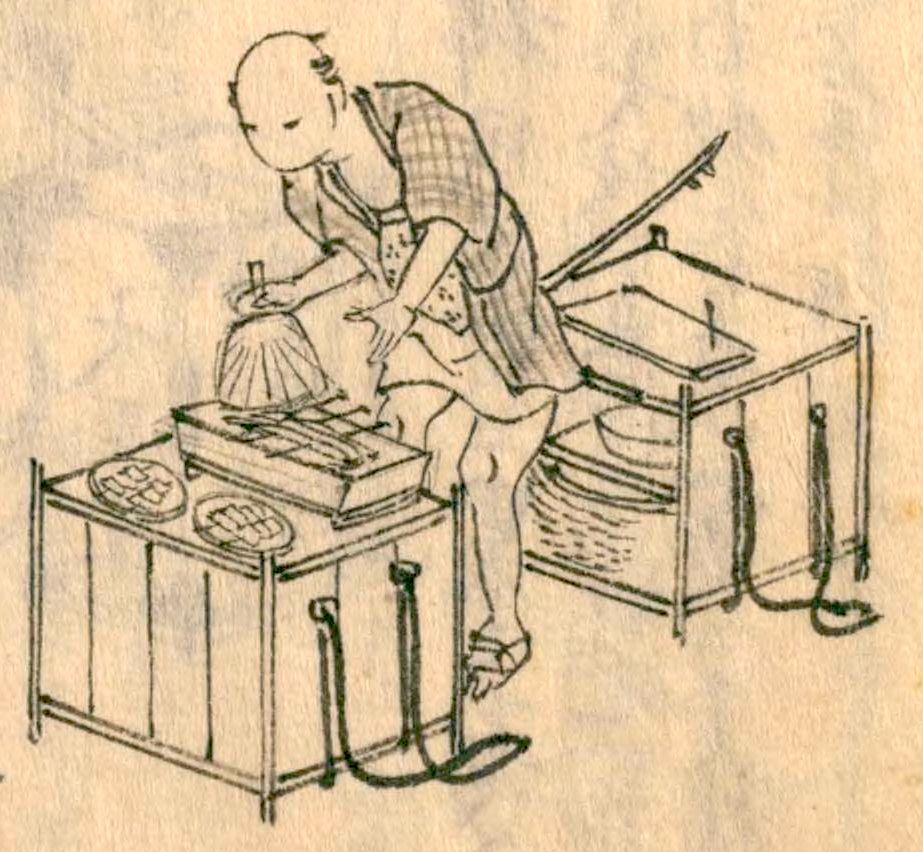
Tempting aromas will have to have attracted other passers-by to make purchases. From Morisada mankō (Morisada’s Sketches). (Courtesy the Nationwide Eating plan Library)
In Kyoto and Osaka, a person skewer of eel sold by distributors would go for 6 mon (¥72), but in Edo the selling price was 16 mon (¥192). These quick-food costs were being a great deal extra very affordable than those people for foods in places to eat. The big difference in expense involving the metropolitan areas was because of to the truth that in Edo, suppliers performed more function to take out the huge bones, when in western Japan, eel was sold with the bones however in.
There is an open up-air eel stall in the woodblock print Jōrurimachi hanka no zu (Flourishing Enterprise in Balladtown) by Utagawa Hiroshige. A couple grills unagi, although a woman of the neighborhood seems on, carrying a tray. Despite the fact that there is no value on display screen, as fare aimed at the frequent persons of the metropolis, it probably price tag about the exact same as that sold by sellers.
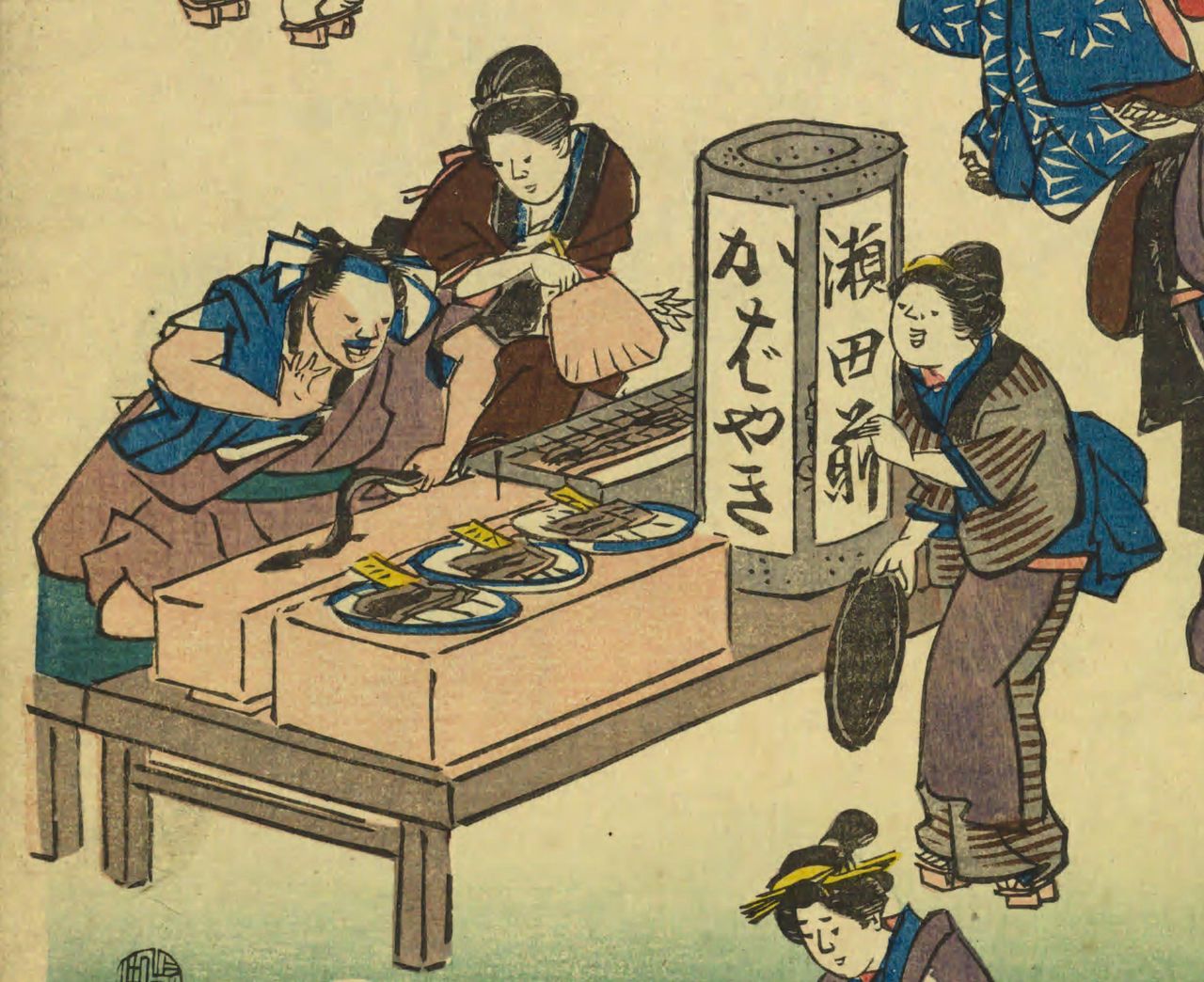
Cooking eel to provide on the place. From Jōrurimachi hanka no zu (Flourishing Organization in Balladtown) by Utagawa Hiroshige. (Courtesy the Countrywide Diet program Library)
A Trustworthy Model
In the Edo time period, unagi had been broadly divided into those people classed as Edomae and individuals from somewhere else. These latter had been also known as tabiunagi, or “traveling eel,” and ended up regarded lessen standing. Eel became massively preferred in Edo from about the center of the eighteenth century, and the nearby selection proven by itself as a trusted manufacturer.
Though there is no business definition, all fish and seafood caught in Tokyo Bay is now typically referred to as Edomae. The phrase Edomae, having said that, originally referred to the sea in entrance of Edo Castle (now Tokyo’s Imperial Palace), alongside a line connecting Haneda to in which the mouth of the Edogawa river employed to be (now to the east of Tokyo Disney Vacation resort). At the time, an inlet arrived right up to the castle, so catches of contemporary fish went promptly to the tables of the shōgun’s family members and samurai, and seafood eaten through the town. The Japanese eel, which now faces the threat of extinction, was once brought ashore in this spot, in which residential tower blocks cluster today.
In Shokunin-zukushi ekotoba (Illustrated Story of Craftsmen), printed in 1805, there is a photograph of an eel cafe with a indicator promoting Edomae grilled eel. “We never have any tabiunagi. It’s all Edomae,” a girl informs clients with a self-happy air.
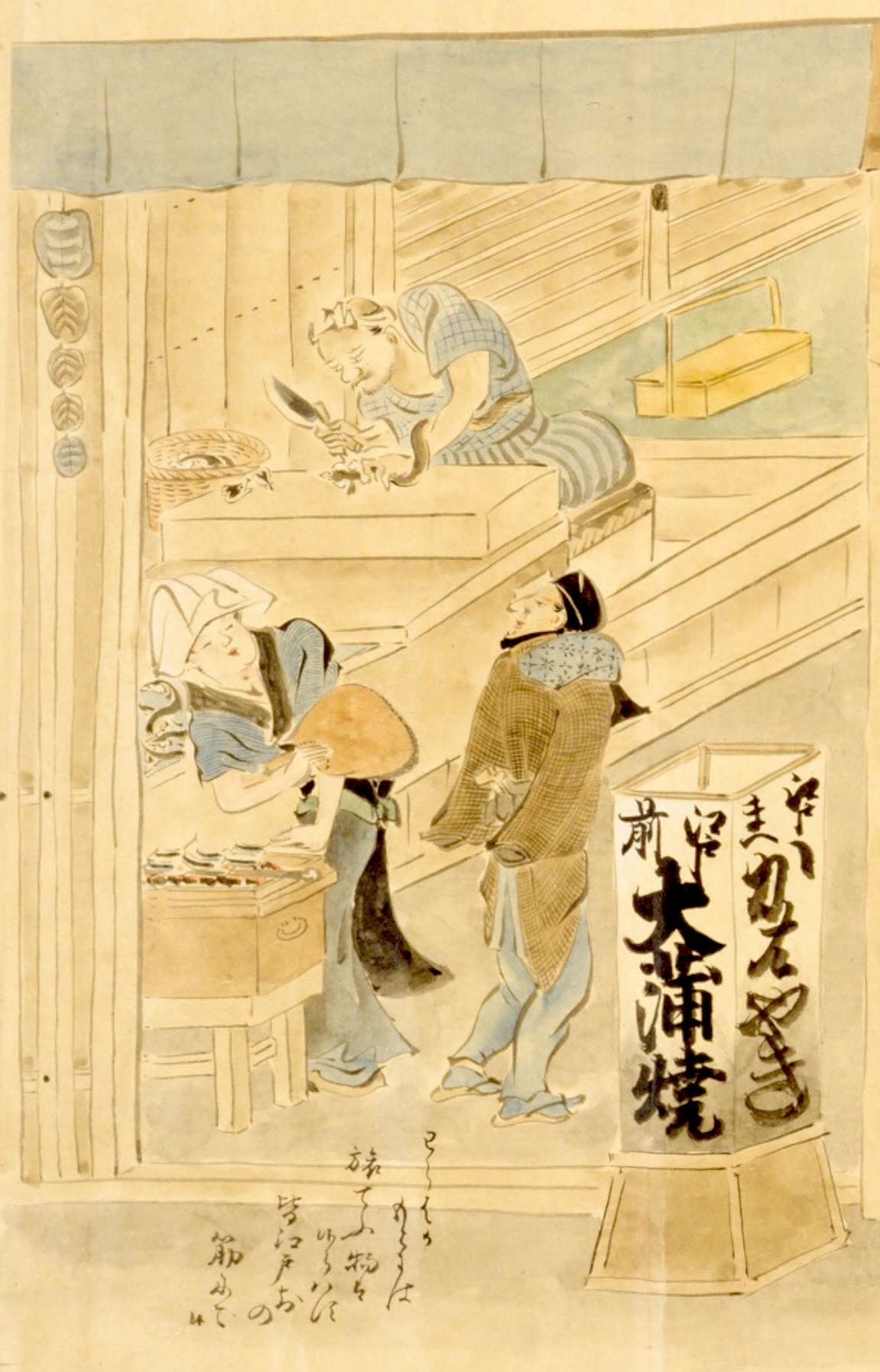
Several website visitors to Edo would make sure to consider the community eel. From Shokunin-zukushi ekotoba (Illustrated Tale of Craftsmen). (Courtesy the National Food plan Library)
We do not in fact know how a lot of a distinction in high quality there was between the two sorts of eel.
Just one theory implies that eels have been cut open up along the tummy in a design and style recognised as harabiraki in Kyoto and Osaka, but this seemed inauspiciously shut to the seppuku process of suicide for Edo, a metropolis of samurai, so the sebiraki style of splitting the back produced there. Nevertheless, a further hypothesis is that sebiraki arrived first in both of those east and west, but harabiraki was released later as much more suited to the abundant grilled eel delicacies that developed from Kyoto. Incidentally, it was not until eventually the Meiji era (1868–1912) that unagi was steamed right before getting grilled, so this is a big difference in between the eel delicacies of the Edo period and right now.
The largest variation in east and west came in the seasoning. Morisada’s Sketches describes how Edo men and women combined soy sauce with mirin (sweet sake) for a total-flavored sauce. In Kyoto and Osaka, mirin was changed by shirozake, which is produced by adding shōchū or mirin to kōji mould and fermenting. Merged with a lighter soy sauce, it built for a lighter and sweeter blend than that in Edo.
Fastidious Restaurant Proprietors
Dining places that sold substantial-finish eel ended up particular about who they served. Morisada describes how renowned institutions like Fukagawaya in Edo and Torihisa in Osaka would not simply welcome new shoppers, no make a difference how loaded they were being.
If they could not procure eel that fulfilled their criteria, they would also close their doorways for several days. Such exacting restaurant proprietors are not a modern phenomenon, and have been all-around for hundreds of years.
Harukiya Zenbei, an additional popular restaurant, is thought by some to have instigated the prolonged-lasting tradition of taking in eel on doyō no ushi no hello. The working day of the ox during the 18 times previous the commencing of autumn is a date in the standard calendar that happens once or 2 times in late July or early August.
In Edo kaimono hitori annai (A Personalized Tutorial to Browsing in Edo), revealed in 1824, Harukiya Zenbei is credited with starting the custom. The selection of essays Meiwashi also states that it started all over the 1770s or 1780s, which is constant with this plan.
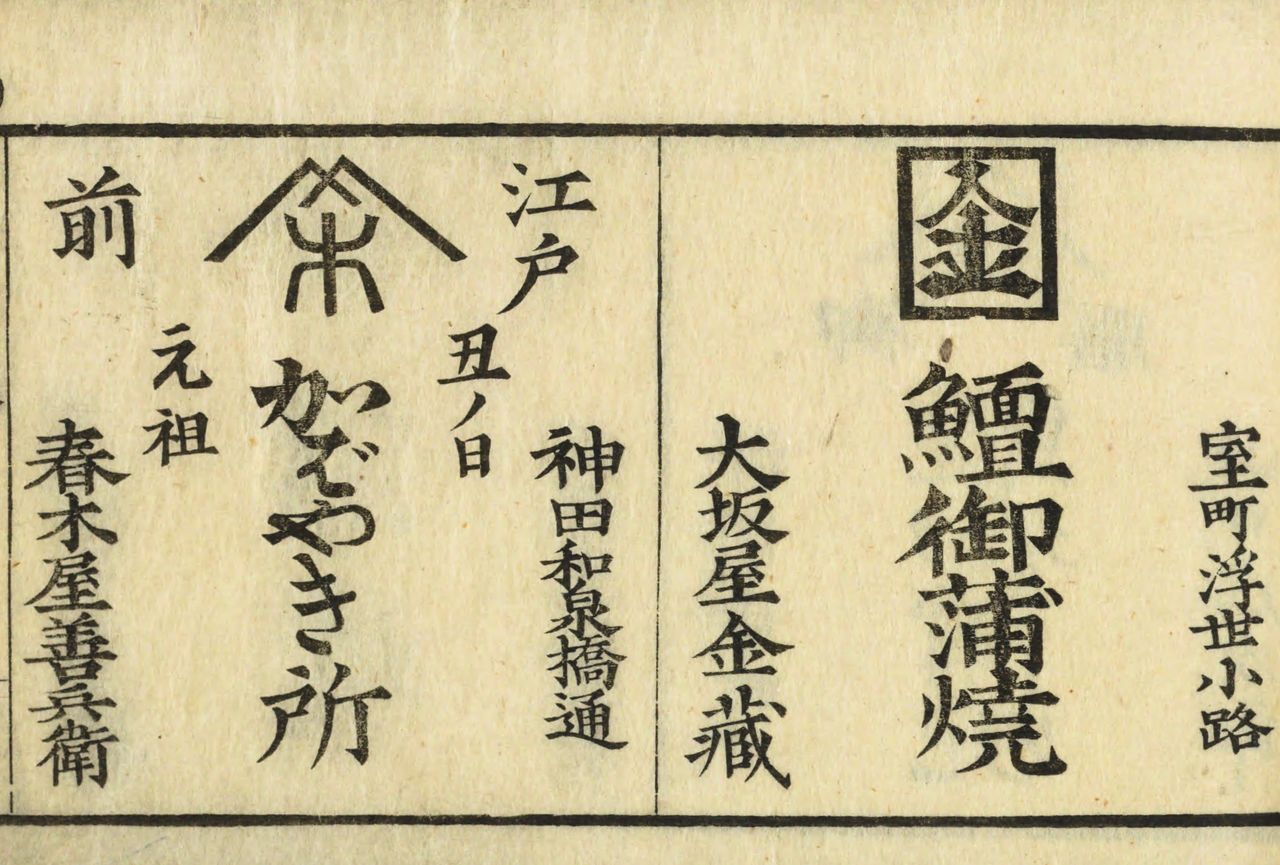
Harukiya Zenbei (left) was in what is now the municipality of Chiyoda. From Edo kaimono hitori annai (A Private Manual to Purchasing in Edo). (Courtesy the Countrywide Diet plan Library)
As to why the date was assumed of as propitious for unagi, a people custom has it that having food stuff commencing with u on ushi no hi can help in conquering the heat of summer. There is a perfectly-acknowledged story that polymath Hiraga Gennai prompt the thought to a restaurant owner as a way of boosting income.
There is no business evidence as to which was the originator, on the other hand, and Morisada’s Sketches does not touch on the custom at all.
(Initially posted in Japanese on November 15, 2020. Banner illustration: Eel on rice, as generally served in Edo. From Morisada mankō (Morisada’s Sketches). Courtesy the Countrywide Diet plan Library.)

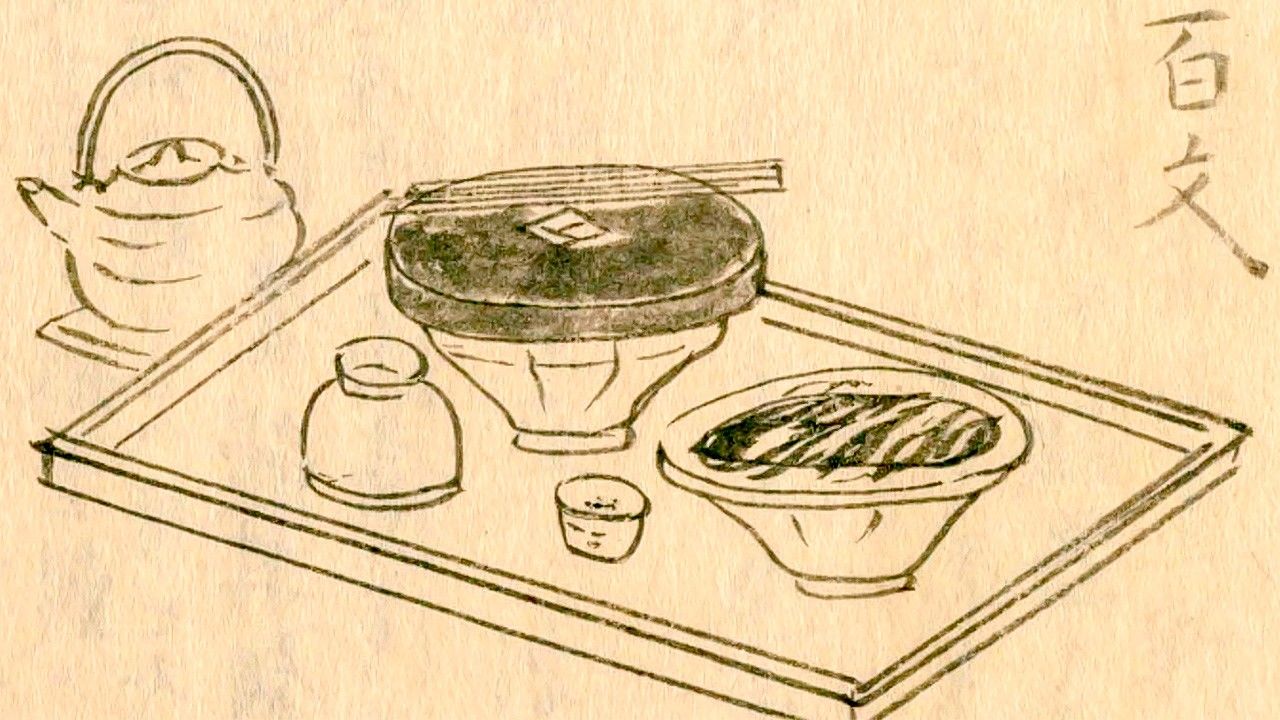




More Stories
Grow Your Italian Herb Garden With 7 Essential Herbs
Top 10 Qualities of a Great Chef
Top 25 Culinary Terms Every Student Should Know